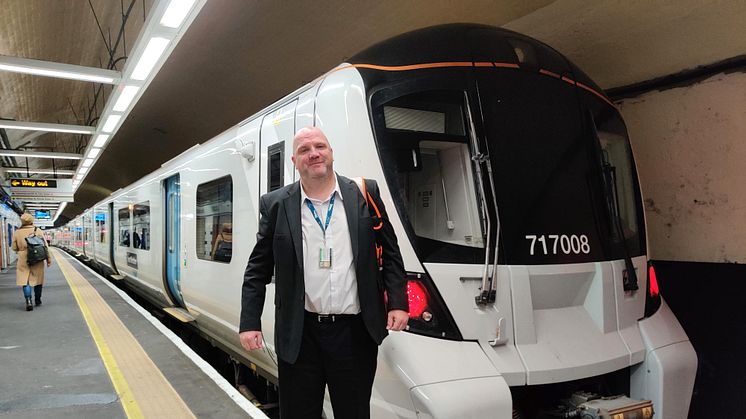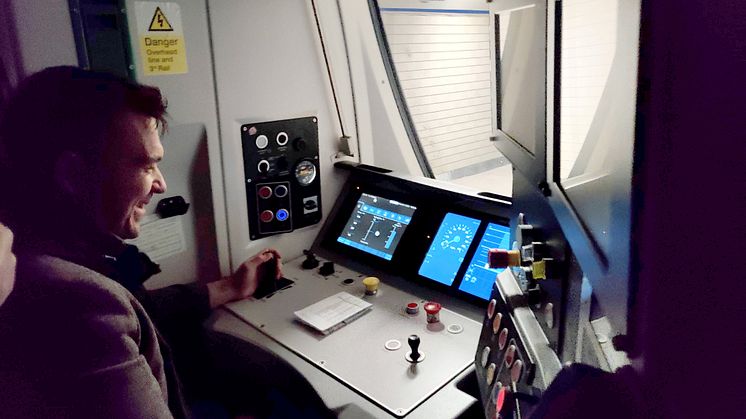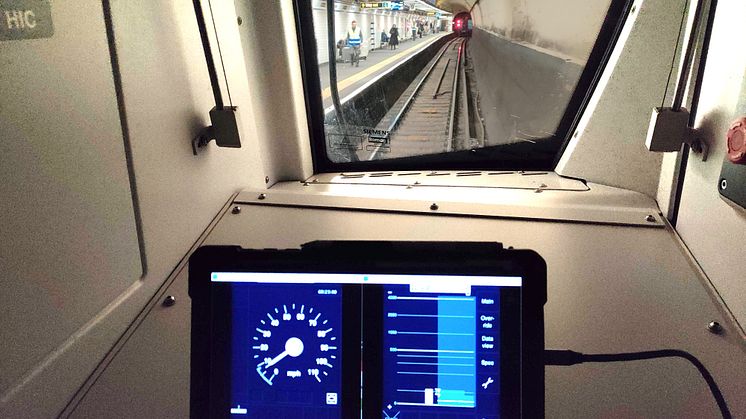
Press release -
Commuters look forward to more reliable services as first passenger trains run to City of London using digital signalling
- Trains run more efficiently because system allows drivers to ‘see’ much further ahead
- Significant milestone for the £1.4bn government-funded East Coast Digital Programme
27 November 2023: Great Northern commuters today began travelling to the City of London in trains controlled by cutting-edge digital in-cab signalling (European Train Control System, or ETCS), giving them a more reliable, greener service.
This is a significant milestone for the £1.4bn government-funded East Coast Digital Programme (ECDP), set to improve journeys along the East Coast Mainline, from London to north of Peterborough, providing the foundations for the expansion of digital signalling across the UK network.
The first digitally signalled passenger train operated today on the Northern City Line between Finsbury Park and Moorgate after parent company Govia Thameslink Railway (GTR), Network Rail and Siemens Mobility switched on the system.
Introducing digital signalling on this busy commuter line is an important first stage in the ECDP, which will see the first introduction of digital ETCS to an intercity mainline in Great Britain.
Progressively, more trains will operate with digital signalling, as more Great Northern drivers are trained to use the technology. Traditional signals will be kept at the side of the track until everyone is trained and the old system can be switched off.
Oliver Turner, Head of ERTMS for GTR said: “I’m delighted for our team and I’m delighted for our passengers. Getting to this point has been a monumental cross-industry effort. It will pave the way for the wider rollout of digital signalling on the East Coast Main Line, promising better reliability for everybody.”
Drivers using digital ETCS aren’t told to stop and go by fixed signals at the side of the track. Instead, they drive according to a target speed set by the system in their cab that is kept continually updated about the location of other trains by a multitude of beacons positioned along the track.
The system effectively allows drivers to ‘see’ much further ahead than line-of-sight signals would ever allow, meaning trains can run more efficiently.
The next phase of the ECDP will see digital signalling introduced between Welwyn Garden City and Hitchin, on the East Coast Mainline. The first digitally signalled trains are expected to operate on this section of the route by the end of 2025.
Ed Akers, Network Rail’s Principal Programme Sponsor, ECDP, said: “Today is a huge step forward towards a digital future where traditional ‘lights on sticks’ are removed and technology delivers a more reliable and punctual railway. On the Northern City Line our cross-industry partnership has learned by doing, and the experience we’ve all gained will help us progress digital transformation on the main line and beyond.”
Ben Lane, Siemens Mobility’s Project Director, ECDP said: “This is a major milestone for the rail industry and I’m proud that Siemens Mobility has brought the technology and experience to help deliver in collaboration with programme partners. Certain to transform the everyday for passengers, economies and communities along the route, this milestone demonstrates we’re on the right track to bringing innovative digital signalling to the East Coast Main Line and beyond.”
ends
Notes to Editors
- A total of 12 round trips will be made today (27 November) in passenger service using the digital European Train Control System (ETCS), between Finsbury Park and Moorgate. More will follow as testing and commissioning drivers and driver managers prepare themselves to train regular drivers in the New Year.
- The Northern City Line is the first phase of the East Coast Digital Programme, which will see the first introduction of the digital European Train Control System (ETCS) to an intercity mainline in Great Britain, and will provide the foundation for the future expansion of digital signalling across the network.
- Installation of ETCS on the Northern City Line has been in development since 2020, and has, until now, been tested only on trains out of passenger hours.
- In-cab signalling provided by ETCS Level 2 operation supplies continual speed information and movement authority to the driver via a computer screen in the driver’s cab, rather than relying on fixed lineside signals.
- Traditional signals will be kept at the side of the track on the Northern City Line until all 250 Great Northern drivers are trained and the old system can be switched off. Having the two systems working side-by-side during the training programme means trained drivers will be able to continue using digital ETCS alongside their untrained colleagues once they are qualified, ensuring they maintain their competency.
- Digital signalling contributes to a greener railway. The East Coast Main Line is already electrified, and these upgrades will deliver a further 55,000 tonne reduction in carbon emissions over 60 years – the equivalent to over 65,000 one-way flights from London to New York, or over 2 million passenger train journeys from London to Edinburgh. This is because there is much less physical equipment to produce and maintain compared with what’s needed for ‘traffic light’ signals. The estimated whole life carbon saving over a 60-year period (the expected life span of a ‘traditional’ signalling system) is around 39%.
- The technology also allows gentler braking, meaning journeys are smoother and use less energy. Finally, a more reliable and punctual railway will encourage more people to choose rail over road and air, ultimately reducing transport emissions for the long-term.
Topics
Categories
For more information, contact the press office on 0203 750 2031.
Govia Thameslink Railway
Govia Thameslink Railway (GTR) operates Thameslink, Great Northern, Southern and Gatwick Express services as follows:
- Thameslink – cross-London services between Bedford/Peterborough/Cambridge and Brighton/Horsham/East Grinstead, and between Luton/St Albans and Sutton/Wimbledon/Rainham; plus services between London and Sevenoaks
- Great Northern – services between London and Welwyn, Hertford, Peterborough, Cambridge and King’s Lynn
- Southern – services between London and the Sussex coast (Brighton, Worthing, Eastbourne, Bognor Regis, Hastings) and parts of Surrey, Kent and Hampshire (Ashford International, Southampton, Portsmouth)
- Gatwick Express – fast, non-stop direct services between Gatwick Airport and London Victoria
www.southernrailway.com, www.thameslinkrailway.com, www.gatwickexpress.com, www.greatnorthernrail.com



